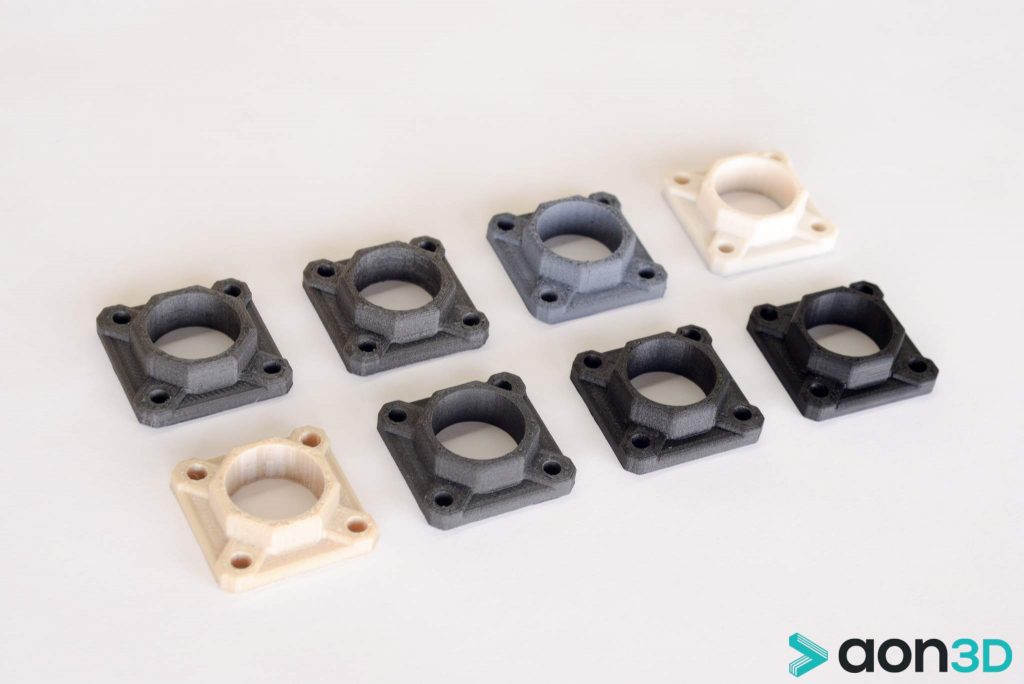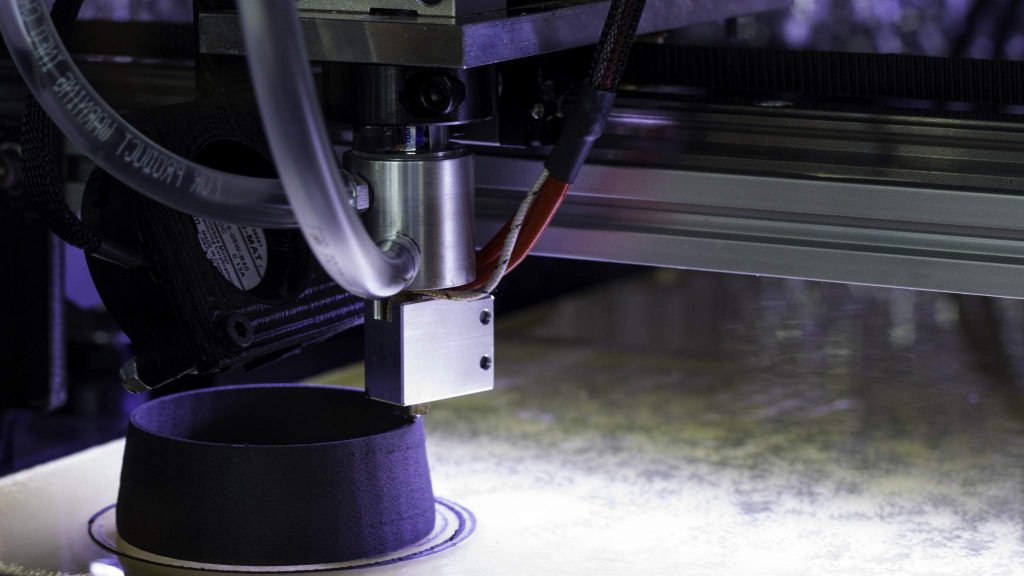3D Printing with higher grade, engineering materials is a key theme for 2017. I caught up with two of the co-founders at AON3D to learn how this 3D printing startup is advancing the state of the art.
Randeep Singh and Kevin Han met over 7 years ago while studying materials engineering. Together with Andrew Walker they founded AON3D and after a successful Kickstarter campaign in 2015, they are now poised to bring engineering grade materials within reach of much wider user group.

Working with higher grade materials
Like many of the best inventions, the AON-M was created to solve a problem faced by the inventor themselves. Running a 3D printing bureau Kevin Han found that existing 3D printers were unable to meet the demands of clients. “I started getting projects from business customers who had demands that couldn’t be met with existing low cost printing solutions” he says.
Together with his co-founders Han started to work on a 3D printer capable of meeting these demands, for example the ability to work with high-temperature materials and larger build volumes. “Initially I started designing a 3D printer just for in-house use,” he tells me.
Early on in the design process, I realized that there would actually be a huge market for this beyond myself if I were to build a proper product.
According to Han one of the key markets for AON3D is service bureaus who are trying to move up market without having to take on a huge bank loan to expand. The company has “also worked with research labs from universities and government institutions.” In the case of the such research groups Singh explains how, “They need a solution that can work with high performance materials (which are often new offerings developed in-house), but is also an open system so they can make modifications as required.”

Functional, end-use 3D printing
These high-performance materials include PEEK and ULTEM, and other thermoplastics at the upper levels of the plastic pyramid. 3D printing with engineering plastics means functional, end-use components can be made. However, the technical requirements and current costs of machinery are greater than most 3D printers on the market.
“One of the main challenges about having a heated environment is that as you get higher and higher temperatures, The electro-mechanical components start running into reliability issues,” Singh tells me.
With patents around 3D printing in these heated environments owned by larger companies, AON3D had to find a new way of tackling the problem. “We put a lot of engineering effort into compensating for the heated environment through careful component selection and features like water cooling, which we were one of the first to adopt,” says Singh.

As we previously reported the AON-M 3D Printer certainly looks impressive, and we’re eager to put the machine through its paces at 3D Printing Industry.
The new design mindset
While the hardware is of course vital, AON3D are paying attention to the full additive manufacturing ecosystem. Han tells me, “You have this new technology and people are still using it to build parts that were designed for injection molding or something like CNC. That is not taking full advantage of 3D printing.”
Design for additive manufacturing (DfAM) requires a different mindset. Han explains,
We’re at an early stage of additive enabled design, and one of the most common frameworks you see are these organically-inspired lattice-like structures. You can have the strength while minimizing the amount of material.
What you get are these nature inspired designs. But that design process is still very difficult.

In an intriguing blog post AON3D talk more about the possibilities and in particular the concept of procedural generation. Singh tells me,
For procedural generation, when you build parts like that you’re getting closer to the limit of the material. Realistically you’re not going to use it to build a part from PLA. But it’s worth doing for a material like ULTEM or PEEK.
If we can eliminate the inconsistency and the complication in printing and give people a reliable and clear way to build high strength parts, then this kind of design can become a lot more useful.
The company also have some exciting news coming up later this year, Han and Singh remain tight lipped on this for now, but 3D Printing Industry will bring you the news as soon as we have it.
More information about the AON-M for industrial 3D printing is available here.



